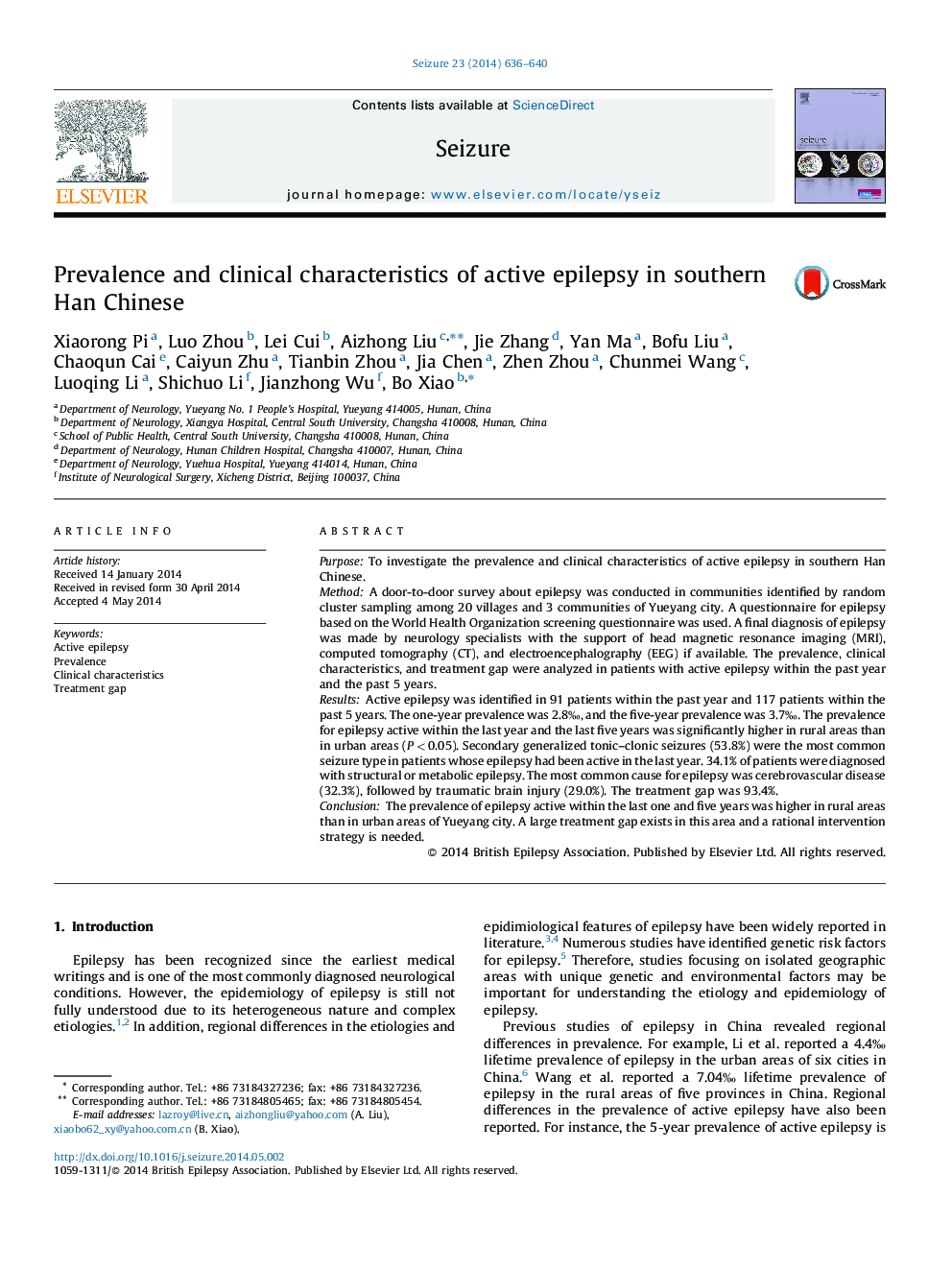| Article ID | Journal | Published Year | Pages | File Type |
|---|---|---|---|---|
| 340562 | Seizure | 2014 | 5 Pages |
PurposeTo investigate the prevalence and clinical characteristics of active epilepsy in southern Han Chinese.MethodA door-to-door survey about epilepsy was conducted in communities identified by random cluster sampling among 20 villages and 3 communities of Yueyang city. A questionnaire for epilepsy based on the World Health Organization screening questionnaire was used. A final diagnosis of epilepsy was made by neurology specialists with the support of head magnetic resonance imaging (MRI), computed tomography (CT), and electroencephalography (EEG) if available. The prevalence, clinical characteristics, and treatment gap were analyzed in patients with active epilepsy within the past year and the past 5 years.ResultsActive epilepsy was identified in 91 patients within the past year and 117 patients within the past 5 years. The one-year prevalence was 2.8‰, and the five-year prevalence was 3.7‰. The prevalence for epilepsy active within the last year and the last five years was significantly higher in rural areas than in urban areas (P < 0.05). Secondary generalized tonic–clonic seizures (53.8%) were the most common seizure type in patients whose epilepsy had been active in the last year. 34.1% of patients were diagnosed with structural or metabolic epilepsy. The most common cause for epilepsy was cerebrovascular disease (32.3%), followed by traumatic brain injury (29.0%). The treatment gap was 93.4%.ConclusionThe prevalence of epilepsy active within the last one and five years was higher in rural areas than in urban areas of Yueyang city. A large treatment gap exists in this area and a rational intervention strategy is needed.
